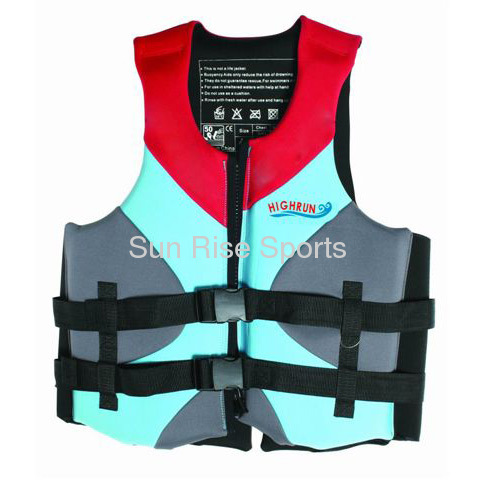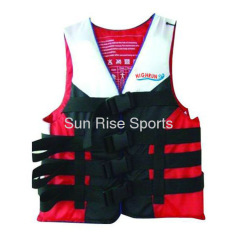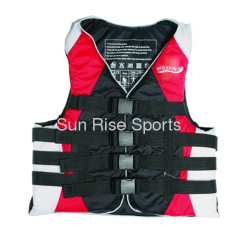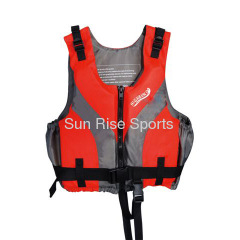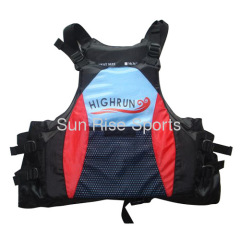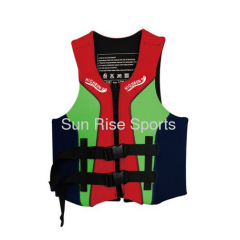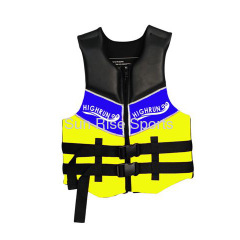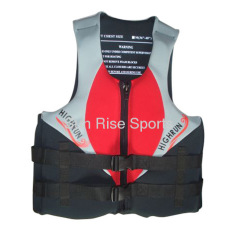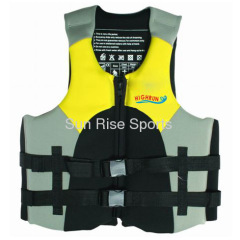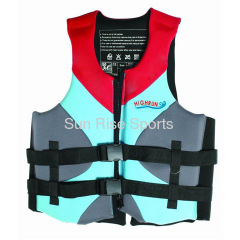
|
Sun Rise Gift and Sports Goods Co., Limited
|
float vest
| Price: | 12.4~12.5 USD |
| Payment Terms: | T/T |
| Place of Origin: | Guangdong, China (Mainland) |
|
|
|
| Add to My Favorites | |
| HiSupplier Escrow |
Product Detail
Color: red+lightblue+gray
offer XS/S/M/L/XL/XXL sizes
Material:2.2mm neoprene+EPE foam inside
Specifications:
Brand: HIGHRUN Size:XS-XXL
Material:2.2mm neoprene+EPE foam inside

Knowledgement: four inflation methods for air-only lifejackets
There are four inflation methods for air-only lifejackets. It is important to know which method your lifejacket uses and how it works.
Oral Some older lifejackets had oral inflation as their only method of inflation, normally via a one-way valve. Although intended for oral inflation, a suitable low pressure pump may be used if preferred. These lifejackets should be fully inflated before going afloat, and should be worn fully inflated until the wearer is back ashore. Although it is doubtful whether these are still in production, they may still be found in use. Modern lifejackets, inflated by means of a gas cartridge, usually if not always have oral inflation as well; this is intended for topping up if the casualty is in the water for an extended period while awaiting rescue, but may also be useful for inflating the lifejacket for test purposes to verify the integrity of the bladder.
Brand: HIGHRUN Size:XS-XXL
Material:2.2mm neoprene+EPE foam inside
| Life Jacket Buoyancy List | |||
| Size | Chest | Weight | Buoyancy |
| (cm) | (kg) | MIN(N) | |
| XS | 71-81 | 40-50 | 40 |
| S | 81-91 | 50-60 | 50 |
| M | 91-101 | 60-70 | 60 |
| L | 101-111 | 70-80 | 70 |
| XL | 111-121 | 80-90 | 70 |
| XXL | 121-131 | 90 | 70 |

Knowledgement: four inflation methods for air-only lifejackets
There are four inflation methods for air-only lifejackets. It is important to know which method your lifejacket uses and how it works.
Oral Some older lifejackets had oral inflation as their only method of inflation, normally via a one-way valve. Although intended for oral inflation, a suitable low pressure pump may be used if preferred. These lifejackets should be fully inflated before going afloat, and should be worn fully inflated until the wearer is back ashore. Although it is doubtful whether these are still in production, they may still be found in use. Modern lifejackets, inflated by means of a gas cartridge, usually if not always have oral inflation as well; this is intended for topping up if the casualty is in the water for an extended period while awaiting rescue, but may also be useful for inflating the lifejacket for test purposes to verify the integrity of the bladder.
Manual Manually inflated lifejackets are operated by pulling a string, which pushes a firing pin into the CO2 canister, inflating the lifejacket. Automatic and hydrostatic lifejackets both have a manual pull string as back up.
Automatic Automatically inflated lifejackets rely on a small pellet or bobbin, which holds back a powerful spring. When the pellet makes contact with water it dissolves very rapidly, releasing the spring, which pushes a firing pin into the gas canister.
Hydrostatic (Hammar) Hydrostatic or Hammar action lifejackets work the same way, but the pellet is protected by a case that only lets water in once it is a few centimetres below the surface. It won't fire until fully submerged.
Didn't find what you're looking for?
Post Buying Lead or contact
HiSupplier Customer Service Center
for help!

